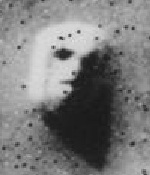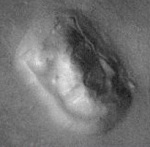Pareidolia: Psychology Behind Some "Ghost" Images
Pareidolia: a psychological phenomenon during which the brain perceives random stimulus as specific or significant.
Parapsychology is often defined as the "study of that which cannot yet be explained by scientific method." For that reason, we must understand what things can be explained by science, otherwise we can make mistakes and jump to faulty conclusions.
Which leads me to pareidolia. Pareidolia is a psychological phenomenon during which the brain perceives random stimulus as specific or significant. A good example of pareidolia is when you look clouds in the sky. As you watch them drift by, rather than random shapes, you start to make sense of them and they become animals or objects.
Scientists believe that pareidolia is a survival technique designed to help us escape predators. The ability to make sense out of random images allowed our ancestors to see lions hiding in the bushes sooner. Sure, that meant that sometimes we ran when there was no predator, but at least we survived.

A historic example of pareidolia occurred in 1976 after NASA's Viking probes returned an image of what looked like a face. NASA insisted that it was "formed by shadows giving the illusion of eyes, nose and mouth." Some people believed them; others did not. It wasn't until 1998 that NASA was able to return to the location and take additional photographs which proved their believe.

Paredolia is also why many people claim to see faces in orbs and other anomalies at haunted locations. Often, these images are seen by people who are looking for ghosts, making them more susceptible to it.
I'll give you an example of paredolia from my own past. When I was still training to become a tour guide, I went on the tour. I brought my camera. Although I saw nothing that night, when I went home and blew up the images, I saw what clearly looked like a face next to a tree. I've shown the photograph to other people, and they agree that it does look like a face. However, I think it is more likely a case of paredolia.
Paredolia can also explain sounds people hear. I go into more detail on this type on my page about Crybaby Bridges.
Other pages on ghost photography:
- Famous Ghost Photographs
- Orbs: Spirits or Natural?
- Best Practices for Photography on Ghost Tours and Hunts
All material is ©2010 by Darcy Oordt, unless stated otherwise. All Rights Reserved. Content cannot be used elsewhere without written permission.

